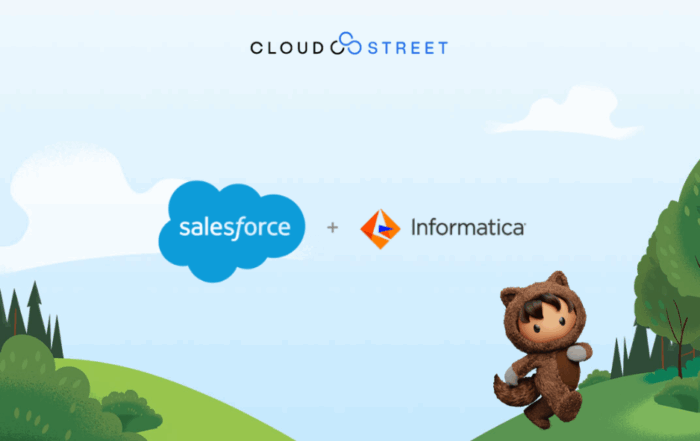Migration services from Salesforce Classic to Salesforce Lightning plus myths debunked

Salesforce classic has always been the most commonly used customer relationship management system until Salesforce Lightning was unveiled and rolled out fully in 2016. The unmatched Lightning experience, which has taken over the Salesforce management, has proved to be more beneficial, effective, and efficient for companies to adopt. Is your company left behind? If yes, then Lightning mode is your real deal in boosting productivity, optimize operations and spark innovation within your organization.
In a nutshell, by making the switch, you will have a completely new and upgraded experience and the Lightning user interface will most likely yield impressive Return on Investment (ROIs). This UI will also help you save on costs, especially for services and updates that Lightning users have free access to. Even better, you don’t have to import or replicate any of your customizations during the migration process.
Other benefits of switching to SF Lightning include:
- Efficient flow of work using the Kanban system enabling you to drag and drop records on the interface.
- Using efficient console apps enables you to see multiple records at the same time with innate tab and subtab steering. This allows you access to all of your Sales and Service tools.
- Using smarter search capabilities to find what you need in a shorter time with Spell correction, Pre-Scoping capabilities, and Type-head.
- Using multitasking Split View to keep context and visibility to your list while viewing a record. This is great for call blitzes or when servicing multiple cases.
- Using fewer clicks with keyboard shortcuts to channel the mouse and maximizing keyboard shortcuts to enhance efficiency and speed to achieve more is also a good enhancement.
A recent survey also shows that Lightning users reported:
- 44% increase in conversion rates
- 41% increase in productivity
- 40% increase in collaboration
- 23% faster time to close
- 21% increase in win rates
This is evidence that the SF lightning system offers more than it’s predecessor and its something every business looking to streamline operations, improve efficiency and productivity should put into consideration.
Processes of migrating from Salesforce Classic to Salesforce Lightning
Every plan is executed through a process, and migrating to Salesforce Lightning is no different. However, this process can be stressful and may leave you wondering if you indeed need to migrate. Either way, migrating to Salesforce lightning is a decision you’ll not regret. Let’s look at some important things to keep in mind as you plan your shift.
Evaluate your needs
You have to assess the need gaps in your organization that you wish to fill by the Salesforce Lightning. Does the current Salesforce ensure simple flow of work? Is the level of productivity maintained? These are some of the important questions you need to ask yourself. You should also find out the flexibility of your organization to adopt new advancements. If the answer to the questions calls for a switch, then you need to move to SF Lightning without hesitation. Moreover, it’s important to find out the capacity and the will of users to adjust to the new development. Try to persuade them by citing the benefits of the process, such as the organization’s overall productivity.
Assess whether your readiness to migrate
You need to examine the Lightning Readiness Check Report to be informed on the current trend of the Salesforce Classic use and performance. This helps you predict the possible effects that will be experienced due to the migration, establish the amount of effort and investment that will be required to migrate, and identify various features that will be abandoned. Do an analysis to ascertain the possible gaps in terms of the features you need that the Salesforce Classic does not support and whether you can still operate without them.
You can use the Salesforce Optimizer App to identify areas you can improve, simplify, or get rid of completely based on usage before the transition. In this case, you can get rid of inactive workflow rules and other unused profiles. Also, evaluate your apps to confirm whether they are Lightning-ready or not. At this point, you may need to operate the Salesforce Optimizer as part of your monthly maintenance before you install a new app. Make sure that before each Salesforce is released, you run the report as often as you want to keep on top of maintenance accomplishments. You can also compare the new process’s contribution with that of the old one to determine your shift. If better, migrate!
Testing the Lightning experience
You can do this using the Lightning Migration Assistant. It guides you through the process of introducing Lightning for your business and how your organization will function without switching it on for the customers. The test gives you an ideal opportunity to try various features, experiments, and apps that might not be evaluated by the Lightning Experience Readiness Check. The Lightning Experience can also assist you in classifying structures your teams may need help in assimilating.
Set goals and implement
You should make sure the present business processes in each department are measured and bench-marked. Develop customer and employee surveys around rampant grumbles, and address them with this transition to ensure productivity. Always ensure everyone is on board.
Roll out the transition
If you operate a small and medium-sized organization, you can switch to the new interface as a complete entity. However, if the organization is big, the gradual rollout will be the best option. You can use the readiness report to determine the departments that are ready and move them first. This process will also allow you to learn as you transition and make informed decisions as time goes by.
Manage the strategy
Some of the challenges faced during this process include resistance and panic from individuals. Identify the user profiles, working timelines and arrange the shifts appropriately in advance to avert inconveniences. Make sure you test the new Lightning features and choose those with immediate benefits. The Lightning Experience Transition Change Management Hub provides step-by-step instructions and best practices on how to achieve your organization’s migration.
Develop user acceptance
The adoption team should use end-user testing for each group and collect data to be used as evidence to prove to the rest of the team to gain their full support. They can also identify the training needed by the users.
Debunking myths about Salesforce Lightning migration
Although Salesforce Lightning is the new transformation in the Salesforce technology today, some organizations are still struggling with doubts about its absolute success. This is due to certain fallacies around migration. Nonetheless, most conservative users are more attracted to the flexibility and promptness of using the Lightning mode. Though it may still seem controversial, the success will be determined by your company’s level of preparedness. It is good to foresee the future to help you make the right improvements in time.
Little or no effect?
Some people believe that things will remain the same even with the Lightning mode. You shouldn’t think like this. The fact is you can have multiple tests before adopting the whole idea. Try to find and analyze all the necessary data about the trend to guide your decision-making process. You can also talk to individual users to acquire the right facts about it. Consult with experts as well to have your transition tested. This will improve your confidence and ensure successful shifting.
Is it a normal technical improvement?
NO! It’s more than that. With Lightning, the variance between Classic and LEX (Lightning Experience) is high. This enables users to switch from a multi-tab approach to a one-page app UI (user interface) to make progress. The first move you will need to make is choose some smart consumers to be shifted to LEX and guarantee an improvement in their daily operations to facilitate the Lightning capability innovations.
There’s a need to plan and prioritize the essential changes to the Lighting web components. This is because some new Lighting features such as Scoring, News, Next step, Sales path, among others, will be available for the users to make a perfect match for them. You need to be knowledgeable about the new tools and choose the right ones to make your team effective. Train the non-technical team on how to use the tools to increase efficiency and productivity.
Changing the interface is simple and easy.
The fact is, this is not an easy process. The big challenge is normally the resistance by users to adopt the change. If this is not addressed, it may hinder the success of an organization. You need to prepare the page layouts, conduct a lot of training, and have administrative sponsorship to curb the obstacles.
The migration is just a process.
This is further from the truth! The transition is an exceptional opportunity to review the present capabilities and workflow flow and apply the new functionality to satisfy your clients’ needs. For instance, you can use Kan-ban to evaluate and update opportunities, add notes, and update the status.
As you plan to migrate to Salesforce Lightning, don’t overwhelm yourself with the amount of work involved. Seek the services of a reputable expert who can help you through the four important migration stages: discovery, assessment, planning, and implementation.
Are you ready for the big shift? Get your migration checklist and up your game today with Salesforce Lightning!
Discover insights that drive results - explore out latest blog posts now
Salesforce Data Cloud vs. Informatica Intelligent Data Management Cloud: A Comparative Analysis
Salesforce Data Cloud vs. Informatica Intelligent Data Management Cloud: [...]
Unlocking B2B Success with Salesforce Experience Cloud
Unlocking B2B Success with Salesforce Experience Cloud In today’s [...]
Future-Ready: How AI is Shaping the Mid-Market Manufacturing Landscape
Future-Ready: How AI is Shaping the Mid-Market Manufacturing Landscape [...]


